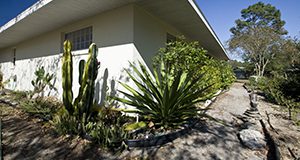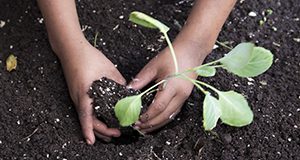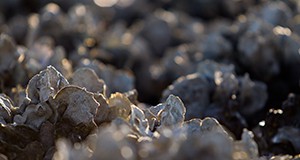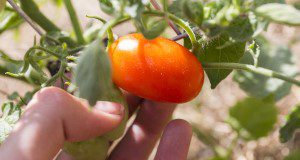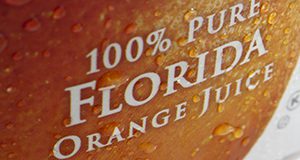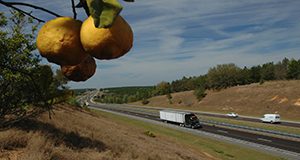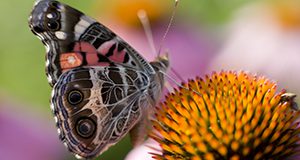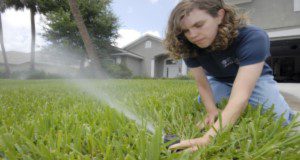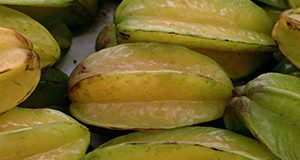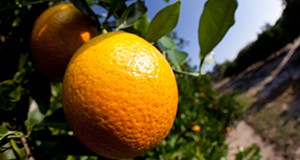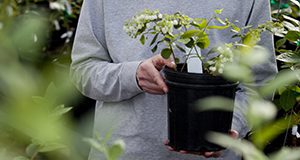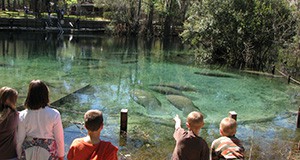The purpose of this report is to summarize ornamental plant producers' perceptions about neonicotinoid labeling and anticipated changes in production practices due to neonicotinoids labeling policy intervention. The target audience is industry, state agency, and public stakeholders involved in decisions and policy making related to the use of neonicotinoid insecticides in the U.S. ornamental plants industry.
https://edis.ifas.ufl.edu/fe1094
Tag: Food and Resource Economics Department
Toward Sustainable Urban Landscape Management: Floridians’ Perceptions of Residential Landscapes and Their Maintenance Requirements
This 5-page fact sheet written by Hayk Khachatryan, Alicia Rihn, Xumin Zhang, and Michael Dukes and published by the UF/IFAS Food and Resource Economics Department is the first in a series from the Sustainable Residential Landscape Project, a study conducted in 2016 to address perceptions of landscapes in Florida, different factors that could influence the adoption of more sustainable landscape options, and ways to promote sustainable landscaping options. The Sustainable Residential Landscape Project was funded by the UF/IFAS Center for Landscape Conservation and Ecology (CLCE).
https://edis.ifas.ufl.edu/fe1090
Costs and Benefits of Vegetable Gardening
Home vegetable gardening has numerous documented benefits, including savings on the family food bill. How can a gardener calculate cost savings from a garden? Which vegetables cost more to grow in the garden and which cost less? This 10-page fact sheet written by Kevin Athearn, Hannah Wooten, Liz Felter, Catherine G. Campbell, Jessica M. Ryals, Matthew C. Lollar, Juanita Popenoe, Lorna Bravo, LuAnn Duncan, Christa Court, and Wendy Wilber and published by the UF/IFAS Food and Resource Economics Department helps home gardeners estimate the costs and cost savings from vegetable gardening.
https://edis.ifas.ufl.edu/fe1092
Potential Economic Benefits of Restoring Commercial Oyster Harvest Levels in Apalachicola Bay, Florida
Florida’s Apalachicola Bay has long been known for its oyster harvesting and processing industry, but a steady decline in oyster landings in the Bay has threatened the industry. The complex nature of the human and natural systems that together affect Apalachicola’s oyster reefs has created uncertainty about the long-term sustainability of the oyster fishing industry in Franklin County, which has prompted many questions about the ecology of the Bay and the economy of the region from a variety of stakeholders that directly or indirectly depend on the survival and successful restoration of the Apalachicola Bay oyster fishery. This 5-page fact sheet estimates the potential economic impacts associated with a successfully restored oyster reef in Apalachicola Bay, basing estimates on different hypothetical oyster harvest goals. Written by Robert Botta, Ed Camp, Christa Court, Caleb Stair, and Charles Adams and published by the UF/IFAS Food and Resource Economics Department, it is designed to inform decision making and discussions related to restoration and resource management in the region.
https://edis.ifas.ufl.edu/fe1085
Constructing a Southwest Florida Tomato Enterprise Budget
Enterprise budgets are effective planning tools for growers in search of help with forecasting, resource coordination, and better production decisions. In essence, enterprise budgets can help producers determine what to produce, how many acres to produce, the cost of production, and the necessary price to be profitable. This 5-page fact sheet written by Tara Wade, Barbara Hyman, Eugene McAvoy, and John VanSickle and published by the UF/IFAS Food and Resource Economics Department describes the process used to create the 2017/18 enterprise budget for tomatoes in southwest Florida and includes resources for producers interested in creating enterprise budgets for their own operations.
https://edis.ifas.ufl.edu/fe1087
Do Millennials Have a Stronger Demand for Orange Juice?
Accounting for a quarter of the population in the United States, the millennial generation is believed to have stronger buying power than other generations. But does targeting orange juice marketing to millennials, and, in particular, millennial parents, reap rewards? This 4-page fact sheet written by Yan Heng, Ronald W. Ward, and Lisa A. House and published by the UF/IFAS Food and Resource Economics Department presents the results of a survey examining several generations and their impact on demand for orange juice to find out whether targeting this one is a wise marketing strategy.
https://edis.ifas.ufl.edu/fe1089
Constructing a Southwest Florida Bell Peppers Enterprise Budget
Enterprise budgets can assist with forecasting as well as help managers coordinate resources, make production decisions, examine expenditures, and anticipate outcomes from changes in production practices. They can help producers determine what to produce, how many acres to produce, the cost of production, and the necessary price to be profitable. This 6-page fact sheet written by Tara Wade, Barbara Hyman, and Eugene McAvoy and published by the UF/IFAS Food and Resource Economics Department describes the process used to create the 2018-19 enterprise budget for bell peppers in southwest Florida.
https://edis.ifas.ufl.edu/fe1088
The Electronic Logging Device Mandate and Costs for Refrigerated Citrus
Speedy truck transportation is required to get products like fresh produce from the farm to the grocery store before it spoils. The Electronic Logging Device (ELD) Mandate from the Federal Motor Carrier Safety Administration could significantly affect trucking costs for agricultural producers. This 6-page publication written by Tara Wade, Shellye Suttles, and Derek Farnsworth and published by the UF/IFAS Food and Resource Economics Departmentuses truck shipment data to analyze transportation costs and identifies potential future effects of the ELD Mandate.
https://edis.ifas.ufl.edu/fe1086
Attitudes about Sea-Level Rise Adaptation: Comparison between Miami-Dade County and the Rest of Florida

Sea-level rise and climate change are important issues in science, politics, and communities. Sea-level rise is a particularly contentious topic in Florida, where expected impacts include coastal flooding, shrinking shorelines, and saltwater intrusion. It is unclear what Floridians think about sea-level rise and the ways in which the state can adapt to these impacts. This 5-page fact sheet written by Bailey Emrick, Misti Sharp, and Xiang Bi and published by the UF/IFAS Food and Resource Economics Department summarizes findings from two recent surveys examining attitudes of Miami residents and those of residents of the rest of Florida about sea-level rise and potential adaptations to it.
https://edis.ifas.ufl.edu/fe1084
Are consumers knowledgeable about neonicotinoid insecticides and pollinator-friendly plants?
What does the general public know about neonicotinoids used in ornamental horticulture and their effects on pollinators? The question is an important one given that home landscapes serve as pollinator habitat and can impact pollinator health. This 5-page fact sheet written by Hayk Khachatryan, Xuan Wei, and Alicia Rihn and published by the UF/IFAS Food and Resource Economics Department summarizes a survey addressing consumer knowledge about neonicotinoids and pollinator plants, as well as their interest in enhancing pollinator health. The survey is part of a larger research project aimed at incorporating pollinator conservation into the ornamental horticulture industry's sustainability initiatives.
https://edis.ifas.ufl.edu/fe1081
Consumer and Producer Perceptions and Preferences for Pollinator Friendly Labeling Practices in the US Green Industry
Increasing consumer interest in sustainable products and in protecting bees and other pollinator insects may be reducing demand for plants grown using neonicotinoids. This 5-page fact sheet written by Hayk Khachatryan, Xuan Wei, and Alicia Rihn and published by the UF/IFAS Food and Resource Economics Department summarizes consumer and producer perceptions about neonicotinoid-related regulations and labeling practices and identifies discrepancies between consumer and producer preferences for different pollinator friendly labeling phrases.
https://edis.ifas.ufl.edu/fe1083
Homeowners’ Preferences for Smart Irrigation Systems and Features
Drought conditions make landscape irrigation and reducing water use top-of-mind for many Floridians. Encouraging wise water use is of particular importance to the smart irrigation industry and water policy makers. This 5-page fact sheet written by Hayk Khachatryan, Alicia Rihn, Dong Hee Suh, and Michael Dukes and published by the UF/IFAS Food and Resource Economics Department pinpoints key attributes and barriers affecting consumers' irrigation purchases and their adoption of smart irrigation technologies.
https://edis.ifas.ufl.edu/fe1080
Orange Juice Consumers Response to the Covid-19 Outbreak
This 4-page fact sheet written by Yan Heng, Marisa Zansler, and Lisa House and published by the UF/IFAS Food and Resource Economics Department presents consumers’ responses to a monthly survey and provides a look at those consumers who have contributed to a surge in orange juice sales since April. It is intended to help the industry understand the possible impacts of the COVID-19 pandemic and develop marketing plans to sustain orange juice purchases beyond the short run.
https://edis.ifas.ufl.edu/fe1082
Sample Profitability and Cost Estimates of Producing Sweet Flavored Carambola (Averrhoa carambola) in south Florida.
This 7-page fact sheet written by Fredy H. Ballen, Aditya Singh, Edward A. Evans, and Jonathan H. Crane and published by the UF/IFAS Food and Resource Economics Department reports the costs and returns of operating an established sweet-flavored carambola grove in south Florida. It is intended to provide a reference to help estimate the financial requirements of running an established grove. Information was collected through field interviews with growers and industry specialists about a wide range of production practices used on small farms of five acres or fewer.
https://edis.ifas.ufl.edu/fe1079
Cost of Producing Fresh Market Grapefruit in Indian River in 2018/19
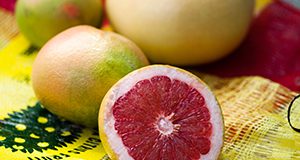
This 4-page fact sheet written by Ariel Singerman and published by the UF/IFAS Food and Resource Economics Department presents the cost of production per acre for growing fresh grapefruit in the Indian River region during 2018/19. Estimates reflect costs and cultural practices for a panel of growers, particularly important information at this time because, since citrus greening (HLB) was found, growers have been modifying their practices from year to year in an attempt to cope with the disease.
https://edis.ifas.ufl.edu/fe1078
Cost of Producing Processed Oranges in Southwest Florida in 2018/19
This 4-page fact sheet written by Ariel Singerman and published by the UF/IFAS Food and Resource Economics Department estimates the cost of production per acre for processed oranges grown in southwest Florida in 2018/19 based on a survey of southwest Florida growers.
https://edis.ifas.ufl.edu/fe1077
Harmonizing the Assessment of the Impacts of Natural Disasters to Florida Agriculture
UF/IFAS Extension has developed an online survey instrument to improve collection of data on losses to Florida agricultural businesses following disasters and to assist agricultural stakeholders in times of disaster. Florida’s agricultural sector frequently experiences substantial adverse impacts during and after natural disasters. Depending on the size and scope of the disaster, agricultural business owners and employees could suffer reduced earnings, financial insecurity, and social stress, and consumers could experience temporary food insecurity. Timely provision of credible estimates of agricultural losses after a disaster is critical to an official disaster declaration and to timely provision of disaster relief and recovery, but collecting data on agricultural losses can present challenges. This 15-page fact sheet written by Christa Court, Alan Hodges, and Matt Lollar and published by the UF/IFAS Food and Resource Economics Department describes the online survey instrument, explains how to use it, and communicates how the data collected will be used in analyses of economic losses.
https://edis.ifas.ufl.edu/fe1075
Effectiveness of Retail Promotions in the Green Industry by Age Group: A Case Study
Do people of different ages shop differently for their garden plants? This 6-page fact sheet published by the UF/IFAS Food and Resource Economics Department shares results from a study investigating differences between younger and older consumers and their visual attention to in-store signage and plant tag information. Authors Hayk Khachatryan and Alicia Rihn provide a deeper understanding of how end consumers use point-of-sale information to determine their purchases in the retail center. Green industry growers, marketing intermediaries, and retailers will find the information useful as they design in-store marketing materials.
https://edis.ifas.ufl.edu/fe1073
Economic Value of Florida Water Resources: Contributions of Tourism and Recreation to the Economy
Recreation is only one of the benefits people receive from water resources. Water is essential for fisheries and aquaculture, for drinking and bathing, for sanitation, and for spiritual and symbolic purposes, among myriad other uses described in the Economic Value of Florida Water Resources series. This 6-page fact sheet written by Tatiana Borisova, Kurt Oehlbeck, Xiang Bi, Tara Wade, Alan Hodges, Kelly Grogan, and Fe Hei and published by the UF/IFAS is the second part of the series. It discusses the contribution of water-based tourism to the economy in various Florida regions, summarizing a number of economic studies and focusing on freshwater-based recreation, such as canoeing, freshwater angling, wildlife watching, lake- or river-shore hiking, spring diving, and more. Readers can pick and choose the studies most relevant to their geographic area or their area of interest.
https://edis.ifas.ufl.edu/fe1065
Does Eco-label Format Influence Consumers’ Valuation of Fruit-Producing Plants?
Consumer demand for environmentally friendly products has increased, and consumers are willing to pay more for environmentally friendly fruit-producing plants. With the increased demand, however, the number and variety of eco-labels describing the environmentally friendly qualities of plants has also increased, which could confuse consumers and decrease label effectiveness. Previous studies found that well-designed eco-labels improve consumer understanding, clarity, and choice. This 6-page fact sheet written by Hayk Khachatryan, Alicia Rihn, and Xuan Wei and published by the UF/IFAS Food and Resource Economics Department summarizes a study that addressed how different eco-label formats (text vs. logo) impact consumer visual attention, preferences, and valuations of fruit-producing plants.
https://edis.ifas.ufl.edu/fe1074
